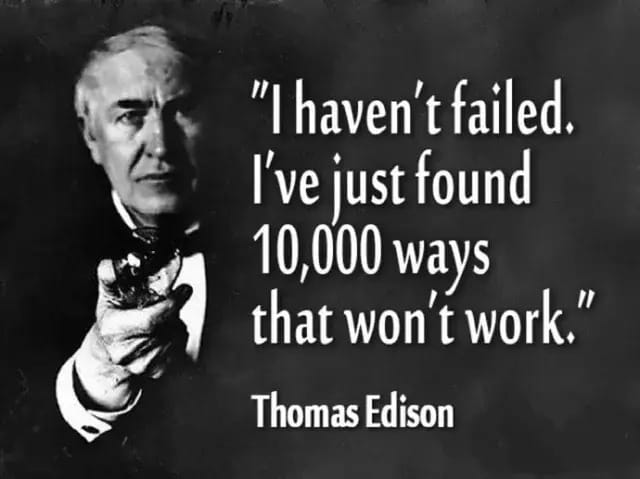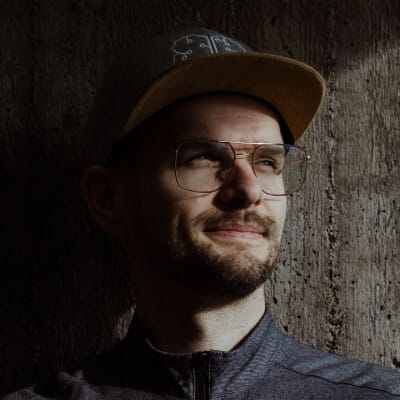There’s growing talk that we’ll soon see the first solo founder build a unicorn.
The idea is that AI will enable agents to work for you, and that a single person can orchestrate every part of a company from scratch.
I think that’s the right analysis - but with the wrong conclusion.
The real shift isn’t that founders will need fewer people to succeed.
It’s that founders won’t need venture capital to succeed.
2025 became the year when AI-assisted development truly became available to everyone.
Sure, it’s far from perfect - but it’s already begun to do something radical:
it’s erasing the line between those who can build and those who want to build.
The same thing is happening on the sales and marketing side - scalable ways to deal with both inbound and outbound.
What used to require a development team, a sales and marketing team, and a polished pitch deck now only needs an idea, prompt literacy, and a bit of grit.
Or rather - a willingness to test, fail, and try again.
Because at its core, entrepreneurship isn’t about being right.
It’s about testing hypotheses.
And the more hypotheses you can test, the faster you find truth.

Previously, every test required money, staff, and patient investors.
Today, it mostly requires curiosity - and a handful of AI tools.
AI has made it possible to multiply the pace of failure without multiplying the cost.
That changes everything.
Because when the experiments themselves - the essence of finding product–market fit - become almost free, the entire logic of early-stage venture funding starts to crack.
The Hunt for PMF Has Always Been the Founder’s Only Real Job
As a founder, you really only have one mission: find product–market fit.
Before you do, everything else - hiring, PR, pitches, funding rounds - is at best a distraction, at worst self-deception.
You can throw as much money as you want at the problem.
But if you don’t find PMF, it won’t matter how many salespeople you hire or how much marketing you do - it won’t fly.
When you finally do find PMF, you’ll face a hundred new problems.
But those are the beautiful kind - the kind that can be solved with money, people, and time.
Traditionally, that’s where venture capital has had its main role:
to accelerate growth once PMF is proven.
But now, many of those same problems can be solved with AI instead.
Can we really grow faster with venture capital once PMF is found - or can we grow through technology, automation, and AI services instead?
It’s an even more precarious question for early-stage investors - mainly the angels who invest their own money into teams and ideas they believe in, the ones who serve a crucial part in the innovation ecosystem today.
Will they even be needed for software startups two years from now?
AI Changes A-lot
What’s happening right now isn’t just a technological shift.
It’s a systemic paradigm shift in innovation itself.
If AI allows us to test more ideas, faster and cheaper, then we no longer need the same amount of capital to reach PMF.
And if the cost of finding PMF drops by 90%, then the value of raising money before finding it drops to almost zero.
In other words:
AI doesn’t just kill jobs - it kills the need for venture capital.
Or rather, it kills the need for venture capital as we know it.
Because the capital that used to finance hypothesis testing in SaaS companies will now have to find new places to go - where the risk is still real and the need for investment is still substantial.
So Where Will Venture Capital Go?
Maybe to deep tech - to the big societal challenges that still require long-term commitment, hardware, and real research.
Maybe to new types of partnerships, where capital doesn’t just buy equity but creates ecosystems.
Or maybe to founders who aren’t building for exit, but for existence and endurance - where VC becomes a co-founder rather than an owner.
But that would require a new business model for venture capital itself.
Future VC has to get smarter.
It requires understanding that the next generation of entrepreneurs have new possibilities - and adapting accordingly.
The New Generation’s “Why”
I often talk to young founders facing their first funding decision - and honestly, those are my favorite conversations.
They give me a chance to dip my toes into their shorelines of an ocean full of possibilities.
Should they raise or not?
To answer honestly, they first have to return to their why.
And almost always, it sounds the same:
They want to be free.
To work on something they’re passionate about.
To not have a boss.
To build something of their own.
Venture capital can be necessary - but it often stands in stark contrast to that very “why.”
Because with money come expectations.
With owners come demands.
With growth come compromises.
So now that it’s possible to build alone, fast, with AI as leverage -
it suddenly makes sense that many choose to skip capital altogether.
They no longer need investors to gain access to power.
They already have that power in the tools in front of them.
Alone Isn’t Strong - But Alone is Free
Don’t get me wrong.
I don’t believe everyone should build alone, or that AI makes teams obsolete.
Magic still happens in collaboration, in culture, and in teams that truly bond.
But AI changes the balance of power.
It gives the individual founder a new kind of autonomy.
The ability to build at their own pace, on their own terms, without having to explain themselves to anyone.
So yes - technically, we may soon see the first solo founder build a billion-dollar company.
But I think that person has already made a different choice.
They’re not building to become a unicorn.
They’re building to be free.
A Lost PMF
As founders go from having one problem - PMF - to having a hundred beautiful problems to solve faster and cheaper than ever before using AI,
venture capital returns to having only one problem of its own.
Because when founders solve their many problems through means other than more capital,
VC itself has to put on the founder hat - because it has just lost its own product–market fit.
And now, it urgently needs to find it again.
Maybe AI will be part of that solution.
Or maybe a new business model will.
A horror prediction on Halloween. I hope you’re able to nuance it to make sense for you and your business. Hopefully the capital can come to even more value in the ecosystem, and that the same amount of money can do more.
See you again next week!
Jacob Kihlbaum


